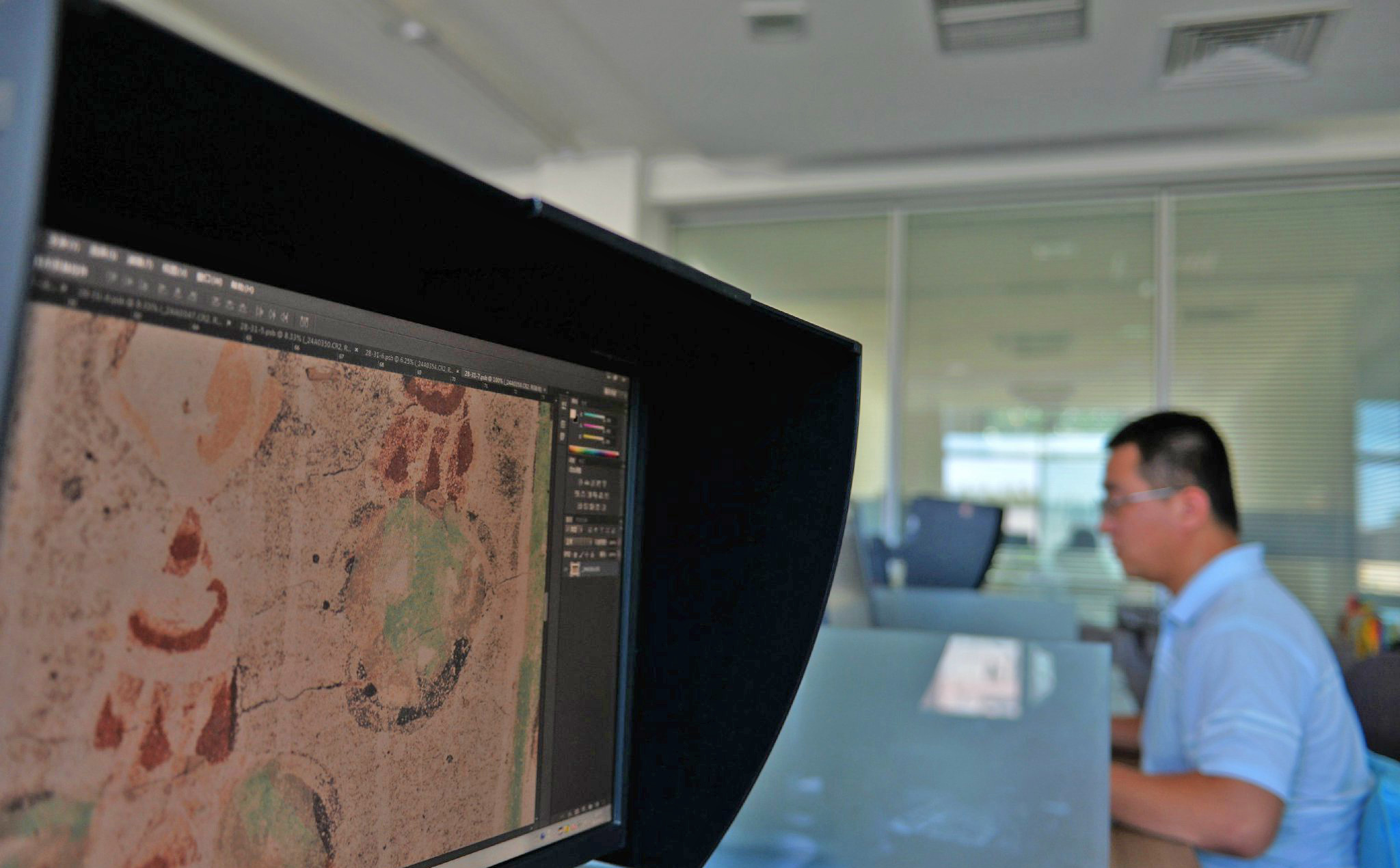‘Digital Dunhuang’ resource database goes online
 Staff members of the Dunhuang Research Academy process images of Buddhist frescos for the "Digital Dunhuang" project.
Staff members of the Dunhuang Research Academy process images of Buddhist frescos for the "Digital Dunhuang" project.
LANZHOU, Gansu Province—Starting on May 1, global researchers can access high-definition, digitized content concerning 30 classical caves of the Dunhuang Grottoes, located at a religious and cultural crossroads on the Silk Road in Northwest China’s Gansu Province.
The resource database, the first stage of the “Digital Dunhuang” project, was completed after more than eight months of preparation, and it marks a breakthrough in the digitization of research materials on the Dunhuang Grottoes.
Wang Xudong, president of the Dunhuang Research Academy, said that the Dunhuang Grottoes are a magnificent art repository of ancient Chinese civilization and offer important evidence of the dialogue and exchange between different civilizations along the ancient Silk Road.
“We are duty bound to preserve all information resources of the Dunhuang Grottoes, thus carrying forward the heritage of world civilizations for future generations,” Wang said.
The digital protection of cultural relics is a crucial means for permanent preservation and sustainable use of cultural heritage, hence the launch and implementation of the “Digital Dunhuang” project, he added.
In order to protect the Mogao Caves, a significant part of the Dunhuang Grottoes, the Dunhuang Research Academy received support from the Ministry of Finance’s program for the development of cultural industry to launch the “Digital Dunhuang” project with a team led by Wang in April 2015. An international consultation meeting was then held and in-depth investigations into related technologies at home and abroad were conducted to ensure the effective implementation of the project.
The entire “Digital Dunhuang” project consists of a resource database, an assets management system and a permanent data maintenance system.
The Dunhuang Grottoes have a history of 1,650 years. The Dunhuang Research Academy has achieved remarkable results in protecting the invaluable caves. The academy began to explore and research the digitization of the grottoes in the 1990s, and it has since mastered a set of core digital technologies.
Currently, it has collected photos and finished panoramic rendering of 120 caves of the Mogao Caves, Yulin Caves and Western Thousand Buddha Caves, processed images of 40 caves, and built 20 three-dimensional colored Buddhist sculptures.
Zhu Yi is a reporter at the Chinese Social Sciences Today.

 PRINT
PRINT CLOSE
CLOSE